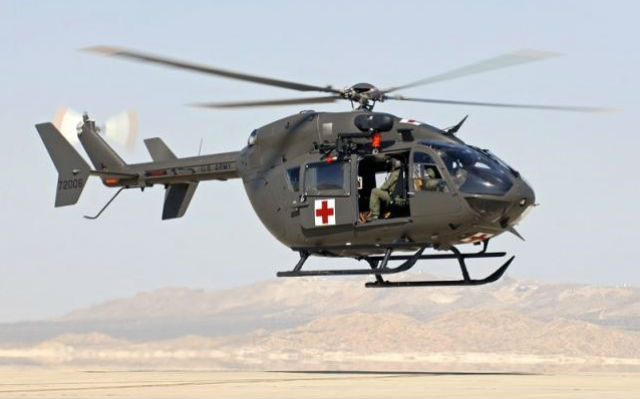While overall orders for aircraft will decline sharply under the US Department of Defense's (DoD) still-to-be-ratified budget proposal, Airbus Helicopters appears to be a winner from the proposed spending plan.
The $496 billion proposal for fiscal year 2015, which must still be approved by Congress, calls for the US Army to purchase 100 Airbus Helicopters UH-72A Lakotas over two years.
It plans to use the twin-engined Lakotas as trainers and retire its current trainer fleet of single-engined Bell Helicopter TH-67 Creeks.
“Every aviator that is trained will be trained on the UH-72A,” the army’s deputy director of the budget Davis Welch said during a 4 March breifing. “The initiative divests single-engine rotary-wing aircraft from the army's inventory,”
Under the proposal, the army would acquire 55 Lakotas in fiscal year 2015 for $417 million, with another 45 UH-72As allocated for the following year, according to documents.
Those orders would come on top of funding for 20 aircraft approved for the current period.

Airbus Helicopters
The service already has nearly 300 Lakotas, which it uses primarily for domestic and non-combat missions.
The UH-72A – a non-militarised copy of the Airbus Helicopters EC145 civil model – are assembled at its facility in Columbus, Mississippi.
Airbus Helicopters says Lakotas cost less to own and operate than any military helicopter in production. And the aircraft’s dual engines and glass cockpits provide added safety and commonality with other army rotorcraft, it claims.
That commonality can make transitioning from trainers to operational aircraft easier for pilots, says Mike Hirschberg, executive director of the American Helicopter Society International.
Also, modern helicopters tend to be more crashworthy than older designs, and Lakotas can be outfitted with systems that allow students to analyse their flying, he adds.
Hirschberg notes the army could consider less-expensive aircraft like AgustaWestland AW119, Airbus Helicopters AS350 or Bell’s new 505 Jet Ranger X — all single-engined aircraft with glass cockpits.
Still, its plan “makes a lot of sense” considering the service already operates Lakotas and intends to retire TH-67s, says Hirschberg.
“The only [other] platform in their inventory they could use as a trainer is the UH-72,” he says.
The army plans to acquire Lakotas as budget cuts force the DoD to trim its existing fleet of aircraft.
Aircraft earmarked for retirement include the army’s fleet of Bell OH-58D Kiowa Warrior scouts and the US Air Force’s Lockheed U-2 and Fairchild Republic A-10s.
USAF also plans to buy three fewer Lockheed Martin C-130Js next fiscal year and DoD will end procurement of Boeing F/A-18E/F Super Hornets and E/A-18G Growlers for the US Navy.
In addition, USAF proposes cutting its fleet ofBoeingF-15C fighters by 51 aircraft.
The navy says it intends to save $9 billion over five years by buying 111 fewer aircraft than it proposed last year.
It proposes cutting procurement of the carrier variant Lockheed Martin F-35Cs from six to two aircraft in fiscal year 2015. It also plans to buy 36 F-35Cs through fiscal year 2019, down from last year’s planned five-year order of 69 aircraft.
Likewise, in fiscal year 2015 the navy proposes buying eight fewer Boeing P-8A anti-submarine aircraft and one fewer Northrop Grumman E-2D Hawkeye.
The navy’s five-year plan calls for a total of 10 fewer of both E-2Ds and P-8As, compared with last year’s plan, says the service.
Source: FlightGlobal.com
















